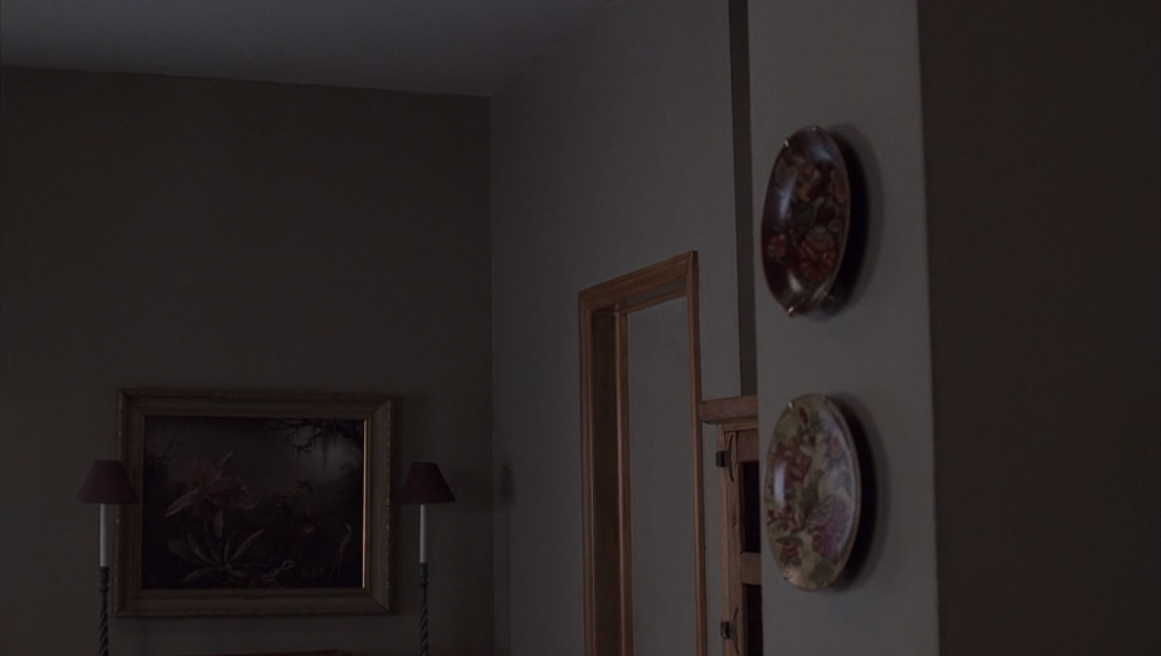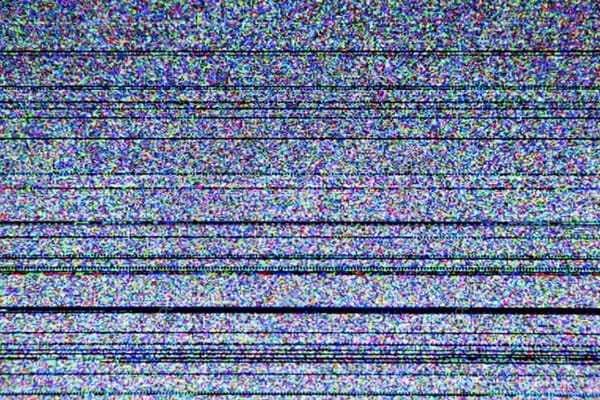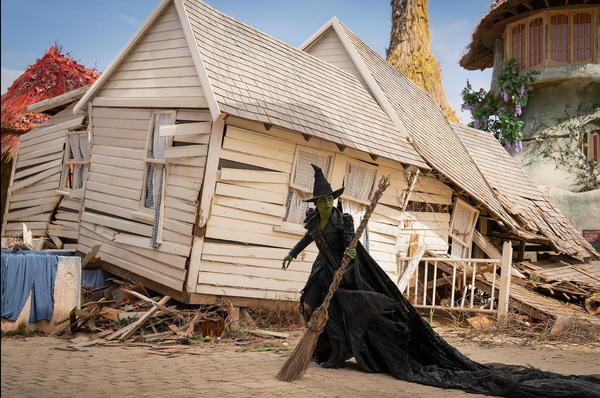The unexpected brilliance of Livia Soprano's final onscreen appearance
A much-mocked visual effects sequence uses the odd and uncanny to incredible effect.

(Each week, I’m publishing a new pop culture essay from a freelancer. Remember: Your subscription fee helps me pay these freelancers for their efforts! This week: Dana Aklilu on why the much-maligned Sopranos scene featuring Tony and his mother's final confrontation is deeply poignant.)
In “From Where to Eternity,” the ninth episode of The Sopranos’ second season, Christopher (Michael Imperioli, who also scripted the episode), having recovered from a near-fatal gunshot wound, recalls his experiences from ‘the other side’ with Tony (James Gandolfini) and Paulie (Tony Sirico). Rattled by Christopher’s recollections, Paulie spends the episode looking for something to alleviate his spiritual anxieties. He eventually winds up seated in the home of a medium.
We first meet an unknown man, who looks dumbfounded as the medium continues to converse with the man’s dead father. Paulie, acting as a cautious skeptic, watches with a smug smirk painted across his face, hiding his interest and evident fascination at the display. “The spirit put him on hold,” he jokes during a break in communication between the living and the dead. As the medium inches closer and closer to information that looks to be more informed by leading questions than through conversation with the dead, Paulie continues to watch.
Then, unexpectedly, the subject of the conversation turns toward Paulie. The medium calmly passes along information that he couldn’t possibly know, from Paulie’s first kill up to the murder of Mikey Palmice (depicted in the first season finale). Paulie, angered, throws a chair across the room and storms out, passing by a statue of the Virgin Mary. We never see the medium again across the run of the show.
When the medium talks to a spirit, the scene presents a rough shot/reverse shot sequence, cutting between the medium and the space the ghost supposedly inhabits. The still camerawork of most of the sequence contrasts with the more jittery shots of the empty space. As the camera slightly wavers side to side, you can notice what seems to be a lowered shutter speed, which creates a sense of something ephemeral, a momentary stillness. Motion has been interrupted. What should be routine is now marked by emptiness. There's an absence of presence (no one is in this space) and regular motion (thanks to the lowered shutter speed). It's like someone tampered with the episode we're watching, cutting out frames of film to remove any sense of completion or harmony.
In the first minutes of season three, episode two’s “Proshai, Livushka,” that same sense of tampering and obfuscation can be felt again. The episode opens on a sanitation lot where the workers’ routine is interrupted by an explosion off the back of a rear loader. We cut to Tony lying unconscious on his kitchen floor. Impossibly, it almost seems as if Tony felt an aftershock that ignores location, time and space, like he was suddenly psychically connected to the plight of sanitation workers miles away.
Carmela finds him in his unconscious state and tends to him. When Carmela asks Tony to recall the minutes preceding his fall, that same lowered shutter speed passes across a shot of his face. It's as if he’s come before the presence of the dead, breaking down his forward drive and forced to be left lying in confusion and displacement. A literal rewinding of the events follows. Carmela disappears from the frame, and Tony gets back up, moving backward to ascend the stairs, waiting for the action to begin. The shutter speed indicates the presence of some otherworldly spectral being in “From Where to Eternity,” but its use in “Proshai, Livushka” is followed by something as familiar as the rewind effect. This choice connects two forms of media, one old and one new: phantasmagoria gives way to home media innovation.
Return to that rewind sequence, as edited by Sydney Wolinsky. As if the beginning and end tails of the filmstrip have been folded together, linking them, we see Tony end where he began. After Tony ascends the staircase in reverse, the camera holds on a shot of the empty staircase for a moment, the same rewind sound effect atop the scene, only for Tony to finally descend normally.
There’s a seamless transition between that sound effect, created for the series, and the one heard from Meadow rewinding William A. Wellman’s 1931 film The Public Enemy as Tony enters the living room. The sound effects are essentially the same. Beyond nodding toward the importance of The Public Enemy to the existence of The Sopranos (enough of one that Tony was originally to be named after the character played by James Cagney), this sequence, when paired with the lowered speed seen atop Tony’s face, mirrors the medium’s speaking with the dead. They mirror each other for a reason. They’re bringing forth specters (Paulie’s victims, James Cagney), then communicating with them.
A separate sequence in “Proshai” achieves a similar effect: the final interaction between Tony’s mother Livia (Nancy Marchand) and Tony. Marchand had passed away before filming on season three began, after a battle with lung cancer. Livia was supposed to have a season-long arc where she would testify against Tony with the stolen plane tickets given to her in the second season finale used as evidence. That storyline no longer being possible, David Chase decided to wrap up the characters’ on-screen relationship in one final interaction. It’s a short sequence whose structure is indistinguishable from their first on-screen interaction in the pilot, though it has been routinely mocked and ridiculed for that very reason. That ridicule misses the mark. Like the sequence in “From Where to Eternity,” there’s a sense of the theatrical at work here. This sequence, too, summons a spirit.
Critic Matt Zoller Seitz wrote in the book The Sopranos Sessions that the recreation of the late Oliver Reed in the Ridley Scott-directed Gladiator served as an inspiration for David Chase in creating this sequence. Seitz notes that on Gladiator, “Scott had a much larger budget and could hedge his bets with high contrast lighting, smoke, mist, and other concealing devices, versus the TonyLivia scene here, presented in a simple, brightly lit room that underscores continuity problems like mismatched light sources and hairstyles.”

It has become conventional wisdom that the dated effects used in this sequence, though then groundbreaking, were nowhere near what anyone wanted or needed them to be. Even with much more advanced visual effects being used in recent films to regularly (and ghoulishly) resurrect dead actors, like Peter Cushing in Rogue One, a sense of the uncanny prevails. The more these effects attempt to draw you into the performances they are meant to conjure, the bigger the divide becomes between something tangible and something incorporeal.
Amid all of the scorn leveled against the sequence, the minutes preceding the scene have been largely ignored, when they should be seen as a preparation for what was to follow. The series itself never shied away from encounters with the supernatural (think back to that medium). And Tim Van Patten’s direction of the scene featuring Livia’s final explicit, onscreen appearance is purposely distant and fundamentally off. There’s a level of repetition to the shot selection and yet a sense of unfamiliarity with the surroundings, as if the camera is constantly reassuring itself that this is the same home as always, and this is just another visit, with everyone serving their roles.
What follows isn’t a purposeful reconstruction of meetings between the two in the past but a funereal breakdown of what came before. Chase, Van Patten, and their team weren’t concerned with conjuring believability. Chrysanthemum flowers, which are usually reserved for laying on the graves of loved ones in Italian culture, adorn Livia’s gown. A white light of indeterminate origin surrounds the outside of her home. Tony’s gifts (the posthumously released Mario Puzo novel Omerta and an audiobook of The Horse Whisperer) act as a mirror to his first gift to her in the pilot, a Sharp CD Player, in addition to a neat summation of their relationship and a pitch-black punchline to the planned season three arc for Livia.
And the dialogue they exchange in this episode purposefully calls back to the show’s first episode. Here is the pair’s first exchange from the pilot:
L: "You know, somebody called here last night after dark."
T: "Who?"
L: "You think I'd answer? it was dark out."
T: "Ma, I'll never understand that. The phone is an auditory thing. Dark is an eye thing. I can understand not going out after dark. You get jumped in the shadows, whatever. But not answering the phone after dark?"
L: "Oh, listen to him. He knows everything."
And here is their final exchange from “Proshai, Livushka”:
T: "Hey Ma."
L: "Look who calls."
T: "Actually I'm standing right in front of you.”
L: “Eh.”
During his visit in the show’s pilot, Tony plays Connie Francis’s “Who’s Sorry Now?” on the CD player he just gave Livia, an attempt at bringing her to at least some simulacra of life. She protests, of course, perhaps at trying to drag the past into the present. That stands in stark relief with the revelation in “Proshai” that her photobook, a gift meant to hold pictures of her children, grandchildren, and everyone she’s loved and lost, is empty. It’s never even been touched.

As Tony flips through the pages in confusion, anger, and disgust, Livia's figure in the background seems to be disconnected from her head. She acts unfamiliar and uncomfortable with her body and presence. A book meant to capture and preserve irreplaceable moments in time now stands as a testament to the last empty years of the mother and son's relationship. This emptiness is so vast and all-encompassing that any good memory is buried.
Tony's final words to Livia are, "Fuck it. Do what you want." He sounds tired, almost resigned. Following his exit, the camera lingers for a moment on her form. In a shot that lays bare the garishness of the effects, her head, still lit by a source completely different from the light used for her body, is flip-rotated. This choice makes the light source even harder to place, furthering the disharmony between her "real" head (that of Nancy Marchand) and the double in her place.
Intermittently throughout the episode, Tony slowly makes his way through The Public Enemy. He's seen it before, and at first, it seems as though the movie will act as a commentary on both the foundation of the gangster genre and the series itself. By the end of the episode, the film serves as wish fulfillment. Amid all the familiar genre trappings that have continued through the years, Tony yearns for something that didn't carry through to him: a doting mother like the one Cagney's character Tommy has.
The Public Enemy also acts as a further parallel to his final meeting with Livia. It's a representation of what he tried to recreate (or summon). Here, Tony is allowed a different kind of correspondence with the dead, though a one-sided one. Both Tony and the series use technology to bring the past into the present, the very thing Livia, in her own way, was against. If what fuels Tony is nostalgia for something that never really existed, what is this viewing if not another tool in his attempt to escape the present? He uses what's available, scraping together what she left behind to enter some space outside time and space to conjure and speak with her spirit, even for a moment.
Though this correspondence allows us to reach back in time, it only travels in one direction. We can try to talk back and maybe even treat the echoes of the dead as a response. But we'll always be left in the present, standing alone.

Episodes is published twice per week. Mondays alternate between a free edition on various topics and a subscriber-supported edition where I recap TV shows of interest. Fridays offer pop culture thoughts from freelance writers. The Friday edition and the biweekly recaps are only available to subscribers. Suggest topics for future installments via email or on Twitter. Read more of my work at Vox.



